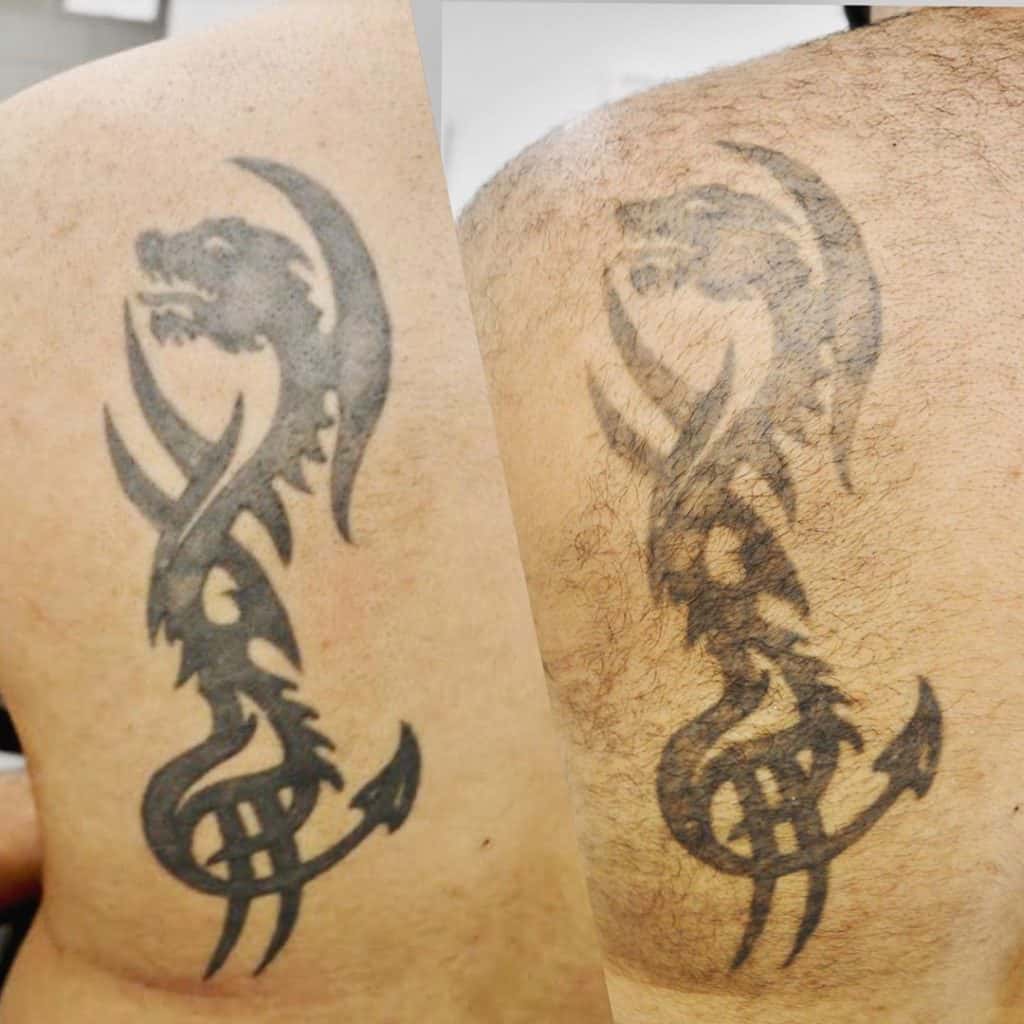Aftercare is a critical component of a successful tattoo removal. By taking the proper measures following laser tattoo removal sessions, your skin will heal beautifully. Though you can trust your specialist to treat the
area with care and expertise, you'll also need to take some of the responsibility home with you. You will receive aftercare instructions following your sessions, though it's never unwise to know how to look after your skin beforehand.


How Long Does It Take Laser Tattoo Removal to Heal?
The pain and discomfort of laser tattoo removal is worth it and should subside in about a week or two. But the skin won't be fully healed for several weeks after the treatment. To avoid the risk of scarring or poor results, our clients should wait for a minimum of six weeks before scheduling their next appointment. Healing time varies from person to person, but we recommend that all of our clients follow their aftercare instructions persistently throughout the first few weeks. Keep in mind that though you can shower two hours after you finish your first treatment, you should avoid baths or swimming until the area is completely healed.
What Can I Expect After Laser Tattoo Removal?
After a session of laser tattoo removal, healing is the next step. Your skin has to go through several stages of recovery before it can handle another treatment. Once the treatments are all complete, the skin will need a rest for a while. For those seeking to place a new tattoo in the removal area, that's important to keep in mind. The first stage of healing following a laser treatment is called 'frosting' because it turns the treated area white. It lasts only a few minutes and is nothing to worry about unless it does not subside. The next thing you can expect is some discomfort, pain, and possible blistering around the treated area. All of this is pretty common, but if it's causing you a lot of trouble, you can apply a cold compress to the area to help soothe the pain. It will feel a bit like a sunburn, so anti-cortisol ointments may also help ease the discomfort. Blistering is common after the removal process. If your skin starts to blister, don't worry. It's just your body trying to heal itself, and the blisters will go away on their own in time. It's important not to pick at the treated area, though, as it could result in scarring or possible infections. If you see discharge coming from the spot after two weeks, or the typical symptoms aren't subsiding, call a doctor. These are signs of a possible infection, which requires immediate attention.
Should You Pop Blisters After Laser Tattoo Removal?
As we mentioned above, blisters are a pretty common side effect during the healing stages. Though you may be tempted to pop them, you should not touch them at all. Popping blisters opens the door to unpleasant intruders that can cause infections. You're better off leaving the blisters alone. Over time they will heal themselves and disappear without leaving a scar. Trying to take matters into your own hands will damage your skin and threatens your health.How Painful Is Laser Tattoo Removal?
Laser tattoo removal isn't a painless procedure, as those who have gone through it will attest. The actual treatment is about as painful as getting your original tattoo, though in some cases, people may experience more discomfort. Laser tattoo removal may not be very pleasant, but it's certainly manageable. The healing stages also have their fair share of pain. Laser treated skin feels like a sunburn for up to a week or more and needs to be handled with care. As we already mentioned, you can use a cold compress to alleviate some of the immediate pain. If the area continues to bother you, you can take acetaminophen, but not aspirin. Aspirin increases the possibility of bruising, scarring, and bleeding. Also, make sure you keep the area covered for the first few days after treatment.What Is the Aftercare for Laser Tattoo Removal?
Laser tattoo removal aftercare is a crucial component of the overall outcome. After each session your skin’s recovery process is in your hands. Your laser removal specialist will go over them in detail and tailor them to your individual needs. But here are the main points of advice to manage the aftermath of a laser tattoo removal session.- Keep the treated area clean and dry and preferably covered for several days.
- Don't soak the area or go for a swim. When showering, try to angle away from the treated area.
- Put a thin layer of antibiotic cream on the spot for at least a week after treatment.
- Never pick at the area because it increases your risk for scabbing and infections.
- If it itches, apply hydrocortisone cream and keep an eye on it. Itchiness and discharge are two of the first signs of infection.
- Try to avoid popping blisters unless you take specific care to do so antiseptically.
- If the symptoms and discomfort last longer than two weeks, consult with a doctor.
Ready To Explore Laser Tattoo Removal For Your Unwanted Tattoo?
At Chronic Ink Tattoo, our certified laser tattoo removal technicians are read to help you explore the best laser tattoo removal Toronto has. If you’re in the Toronto area drop by our shop and check us out for yourself.
Explore Laser Tattoo RemovalLaser Tattoo Removal Studio Locations
Downtown Toronto
378 Yonge Street, 2nd Floor, Toronto, Ontario M5B 1S6 Directions


